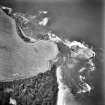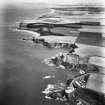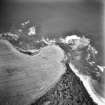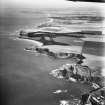The Gegan, Seacliff
Building (Period Unassigned), Human Remains (Period Unassigned), Midden (Period Unassigned), Animal Remains (Period Unassigned), Arrowhead(S) (Period Unassigned), Awl(S) (Period Unassigned), Chisel(S) (Period Unassigned), Comb (Period Unassigned), Needle(S) (Period Unassigned), Point(S) (Period Unassigned)
Site Name The Gegan, Seacliff
Classification Building (Period Unassigned), Human Remains (Period Unassigned), Midden (Period Unassigned), Animal Remains (Period Unassigned), Arrowhead(S) (Period Unassigned), Awl(S) (Period Unassigned), Chisel(S) (Period Unassigned), Comb (Period Unassigned), Needle(S) (Period Unassigned), Point(S) (Period Unassigned)
Alternative Name(s) Ghegan Rock; Sea Cliff Harbour; Seacliff Bay; Seacliffe Seacliff Harbour
Canmore ID 57866
Site Number NT68SW 3
NGR NT 6030 8483
Datum OSGB36 - NGR
Permalink http://canmore.org.uk/site/57866
- Council East Lothian
- Parish Whitekirk And Tyninghame
- Former Region Lothian
- Former District East Lothian
- Former County East Lothian
NT68SW 3 6030 8483.
(NT 6030 8483) The Gegan (NAT)
OS 6" map (NG)
Foundations of an ancient building, and its accompanying kitchen-midden were found on a detached rock jutting out from Seacliff Bay, known locally as the Ghegan.
The foundation wall was built of uncemented stones. Its lower part, 22-23' above HWM, running E-W was traceable for about 39': on its E side it turned N for 12-15' at right angles, then disappeared. On the W it turned N for 26' 8" then NE for c.15' then disappeared. A rude pavement and drain occupied the centre of the area. A few human bones and a great number of animal bones were found within and around the walls. Other finds included:- bone needles, bone awls or arrow points, arrow heads, combs, chisels and knives: fragments of rude pottery,including one small vessel entire; fragments of ware of superior manufacture, resembling Roman workmanship; several 'pot-boilers', and a very primitive quern.
J W Laidlaw 1871
Relics associated with Romano-British sites were found among the foundations of a building and kitchen midden of the Ghegan. They were not later than Roman in age and possibly earlier.
R Munro 1899
A building with an associated midden were excavated here in 1870. There are now no traces of the building or midden.
Site recorded by GUARD during the Coastal Assessment Survey for Historic Scotland, 'The Firth of Forth from Dunbar to the Coast of Fife' 26th February 1996.
'Ghegan Rock, Seacliff, Whitekirk; Kitchen-midden. In 1870, excavation brought to light the foundation-walls of a building and a kitchen-midden. Animal bones were found in large numbers, as well as a few human bones. The relics include a number of objects of bone, needles, pins, a dress-fastener, a comb with decoration recalling the crescent and the spectacle symbols characteristic of early sculptured stones in Scotland, one playing-man of a greenish serpentine, coarse native pottery, and part of the neck and handle of a Roman amphora. There appears to be a cave a few hundred yards to the south of the rock.
J Curle 1932
No trace of these building foundations, nor kitchen midden were seen. At the approximate location is a disturbed area now turf covered, and between this area and Sea cliff Harbour at the edge of the cliff face, is an area of recent excavation.
Visited by OS (WDJ) 13 November 1962
The serpentine playing man is Roman and the amphora fragment is 1st or 2nd century. Both are in the National Museum of Antiquities of Scotland [NMAS].
A S Robertson 1970
Excavation (1870)
Foundations of an ancient building, and its accompanying kitchen-midden were found on a detached rock jutting out from Seacliff Bay, known locally as the Ghegan.
The foundation wall was built of uncemented stones. Its lower part, 22-23' above HWM, running E-W was traceable for about 39': on its E side it turned N for 12-15' at right angles, then disappeared. On the W it turned N for 26' 8" then NE for c.15' then disappeared. A rude pavement and drain occupied the centre of the area. A few human bones and a great number of animal bones were found within and around the walls. Other finds included:- bone needles, bone awls or arrow points, arrow heads, combs, chisels and knives: fragments of rude pottery,including one small vessel entire; fragments of ware of superior manufacture, resembling Roman workmanship; several 'pot-boilers', and a very primitive quern.
J W Laidlaw 1871
Reference (1899)
Relics associated with Romano-British sites were found among the foundations of a building and kitchen midden of the Ghegan. They were not later than Roman in age and possibly earlier.
R Munro 1899
Reference (1932)
'Ghegan Rock, Seacliff, Whitekirk; Kitchen-midden. In 1870, excavation brought to light the foundation-walls of a building and a kitchen-midden. Animal bones were found in large numbers, as well as a few human bones. The relics include a number of objects of bone, needles, pins, a dress-fastener, a comb with decoration recalling the crescent and the spectacle symbols characteristic of early sculptured stones in Scotland, one playing-man of a greenish serpentine, coarse native pottery, and part of the neck and handle of a Roman amphora. There appears to be a cave a few hundred yards to the south of the rock.
J Curle 1932
Field Visit (13 November 1962)
No trace of these building foundations, nor kitchen midden were seen. At the approximate location is a disturbed area now turf covered, and between this area and Sea cliff Harbour at the edge of the cliff face, is an area of recent excavation.
Visited by OS (WDJ) 13 November 1962
Reference (1970)
The serpentine playing man is Roman and the amphora fragment is 1st or 2nd century. Both are in the National Museum of Antiquities of Scotland [NMAS].
A S Robertson 1970
Field Visit (26 February 1996)
A building with an associated midden were excavated here in 1870. There are now no traces of the building or midden.
Site recorded by GUARD during the Coastal Assessment Survey for Historic Scotland, 'The Firth of Forth from Dunbar to the Coast of Fife' 26th February 1996.
Excavation (18 February 2019 - 20 February 2019)
NT 6030 8483 Nine small trenches were excavated, 18-20 February 2019, on an isolated sea stack targeting a site first identified by antiquarian investigation in 1870 when a sub-rectangular building with extensive animal bone deposits was located (Canmore ID: 57866). Finds included a decorated bone comb and an almost completed Roman amphora. The sea stack is 65m from the coast, but it is possible the site was either a promontory fort or a coastal settlement that has seen significant coastal erosion separate the stack from the mainland. There are no obvious archaeological features on the summit surface area which measures 45m E-W by 18m N-S.
Trench 1, located at the northern edge of the stack found evidence for a possible enclosing wall, though the upper parts of the trench were disturbed and included partially preserved modern timbers. Within the wall a sandstone bead was found and beneath the wall, shell, bone and charcoal deposits were located. Trench 2 was located towards the southern edge and identified extensive midden deposits. The midden included frequent charcoal, animal bone and shell deposits. Trench 3 was located on the SW side of the stack and was excavated with the goal of identifying the wall of the large structure revealed in Laidlay’s excavations. Nothing apart from backfill from the previous excavation was found. A groove in the bedrock was discovered in a 1 x 1m sondage under 0.1m of silt, which may have acted as a drain for the buildings that formerly stood on the stack. Other trenches identified possible stretches of walling of uncertain function, but Trench 9 identified a more substantial dry-stone wall, some 0.64m wide and 0.54m high, running E-W within the trench. The wall sat directly on the bedrock and was made of both angular and water-worn stones. Some animal bone from the core of the wall was retained for dating.
Overall, despite antiquarian excavation, The Gegan presented some well preserved in-situ archaeological features indicating habitation in the form of occupation surfaces, midden deposits, and possible stone walled structures. The surviving archaeology will allow for more precise dating of the features and provide a more rigid framework for the previously uncovered artefacts.
Archive: University of Aberdeen
Funder: University of Aberdeen
Gordon Noble, James O’Driscoll and Zachary Hinkley - University of Aberdeen
(Source: DES Vol 20)






























